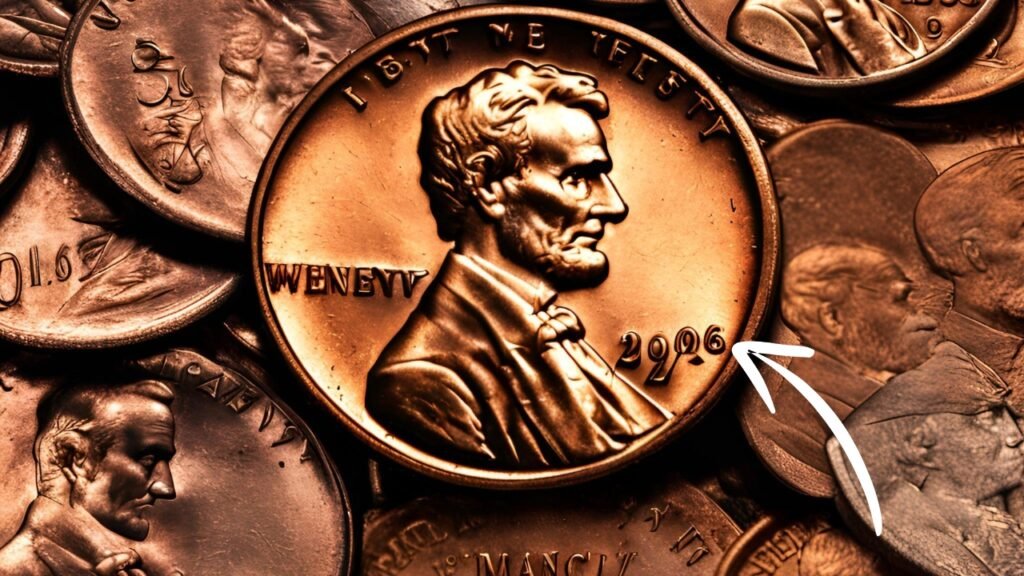The Lincoln Wheat Penny is not just a piece of currency; it is a significant artifact of American history and numismatics.
First minted in 1909 to commemorate the 100th anniversary of Abraham Lincoln’s birth, the Wheat Penny has become a beloved collectible among enthusiasts and casual collectors alike.
This article explores the history, design, and factors that influence the value of the Lincoln Wheat Penny, providing insights for those interested in this iconic coin.
The Lincoln Wheat Penny was introduced as a replacement for the Indian Head cent, which had been in circulation since 1859.
Designed by Victor David Brenner, the coin features a portrait of Abraham Lincoln on the obverse (front) and two stalks of wheat on the reverse (back).
This design was groundbreaking, as it was the first time a real person was depicted on a U.S. coin.
The introduction of the Wheat Penny coincided with a period of significant change in the United States.
The early 20th century was marked by industrialization, urbanization, and social change, and the Lincoln Penny became a symbol of American values, representing hard work, perseverance, and the spirit of the nation.
Obverse Design
The obverse of the Lincoln Wheat Penny features a right-facing profile of Abraham Lincoln, surrounded by the inscription “LIBERTY” and the year of minting.
The design captures Lincoln’s likeness with remarkable detail, showcasing his distinctive facial features and beard.
The inscription “IN GOD WE TRUST” is also prominently displayed above Lincoln’s head.
The reverse of the coin features two stalks of wheat, symbolizing the agricultural roots of America.
The design is simple yet elegant, with the words “ONE CENT” and “UNITED STATES OF AMERICA” inscribed above and below the wheat stalks, respectively.
The use of wheat as a motif reflects the importance of agriculture in the United States during the early 20th century.
The Lincoln Wheat Penny was minted at several locations, each identified by a mint mark. The most common mint marks include:
-
P: Philadelphia Mint (no mint mark)
-
D: Denver Mint
-
S: San Francisco Mint
These mint marks allow collectors to identify the origin of each coin, adding to their collectibility.
The value of Lincoln Wheat Pennies can vary significantly based on several factors. Understanding these factors is essential for collectors and investors alike.
Rarity is one of the most significant factors influencing the value of any coin.
Certain years and mint marks of the Lincoln Wheat Penny are much scarcer than others.
For example, the 1909-S V.D.B. penny, which features the designer’s initials on the reverse, is one of the most sought-after coins among collectors due to its limited mintage.
The condition of a coin, often referred to as its grade, plays a crucial role in determining its value.
Coins are graded on a scale from Poor (P) to Mint State (MS), with higher grades commanding higher prices. The key aspects that affect a coin’s condition include:
-
Wear and Tear: Coins that show signs of wear, scratches, or discoloration will generally be worth less than those in pristine condition.
-
Luster: Coins with a shiny, reflective surface are often more valuable than those that have lost their luster.
-
Surface Quality: Coins free from blemishes, marks, or damage are more desirable to collectors.
The demand for specific coins can fluctuate based on trends in the numismatic market.
Popularity among collectors, historical significance, and the overall interest in coin collecting can all influence demand.
For example, during times of economic uncertainty, collectors may seek out tangible assets like coins, driving up demand and prices.
Certain Lincoln Wheat Pennies hold greater historical significance than others, which can impact their value.
For instance, coins minted during significant events, such as the Great Depression or World War II, may be more sought after due to their historical context.
Several variations of the Lincoln Wheat Penny are particularly notable for their rarity and value. Here are a few key examples:
The 1909-S V.D.B. penny is perhaps the most famous Lincoln Wheat Penny among collectors. With a mintage of only 484,000 coins, it is highly sought after.
Well-preserved examples can fetch thousands of dollars at auction, making it a prized possession for any serious collector.
Another notable variation is the 1922 No D penny, which was minted in Denver but mistakenly produced without a mint mark.
This error occurred due to a shortage of the “D” punch used to mark the coins. As a result, the 1922 No D penny is highly sought after by collectors and can command a high price in the market.
The 1931-S penny is another rare find, as it was minted in limited quantities. Due to the Great Depression, the U.S.
Mint reduced production, making this coin a valuable addition to any collection.
Collecting Lincoln Wheat Pennies can be a rewarding hobby for both novice and experienced numismatists. Here are some tips for getting started:
For beginners, starting with a basic set of Lincoln Wheat Pennies is a great way to familiarize yourself with the series.
Collecting coins from each year and mint mark can be a rewarding challenge.
The condition of a coin significantly impacts its value. When collecting Lincoln Wheat Pennies, pay attention to the coin’s grade, which is determined by factors such as wear, scratches, and overall appearance. Coins in higher grades are generally more valuable.
Understanding the rarity and value of specific Lincoln Wheat Pennies can help collectors make informed decisions.
Resources such as coin price guides, online forums, and numismatic publications can provide valuable insights into the market.
Coin shows and auctions are excellent opportunities to find rare Lincoln Wheat Pennies and connect with other collectors.
Networking with fellow enthusiasts can lead to valuable information and potential trading opportunities.
Beyond its numismatic value, the Lincoln Wheat Penny holds cultural significance in American society.
It represents a connection to the nation’s history and the ideals that Lincoln stood for—freedom, equality, and unity.
The coin has also been featured in various forms of media, including literature, art, and film.
Its image has become synonymous with American currency, and it continues to evoke nostalgia for a simpler time.
As the world of currency continues to evolve, the Lincoln Wheat Penny remains a beloved piece of American history.
While the coin is no longer produced, its legacy lives on through collectors and enthusiasts who appreciate its historical significance.
In recent years, there has been a resurgence of interest in coin collecting, particularly among younger generations.
The Lincoln Wheat Penny’s accessibility and affordability make it an ideal entry point for new collectors, ensuring that its legacy will continue for years to come.
Lincoln Wheat Penny worth
The Lincoln Wheat Penny is more than just a coin; it is a symbol of American history, culture, and collectibility.
From its introduction in 1909 to its transition to the Lincoln Memorial penny in 1959, the Wheat Penny has left an indelible mark on the hearts of collectors and historians alike.
As we reflect on the significance of the Lincoln Wheat Penny, we celebrate its role in shaping American currency and its enduring appeal to generations of collectors.
Whether cherished in a collection or found in pocket change, the Lincoln Wheat Penny serves as a reminder of the values and ideals that define the United States.
In a world where the lines between technology and tradition are increasingly blurred, the Lincoln Wheat Penny stands as a testament to the enduring legacy of physical currency and the stories it tells.
As collectors continue to seek out this iconic coin, the Lincoln Wheat Penny will forever hold a special place in the history of American numismatics.
RARE COINS value is $18 Million – check it fast
Source link



